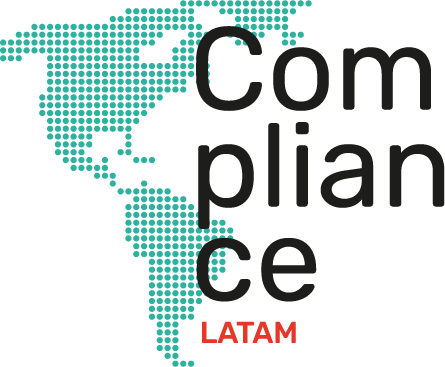
20-09-2023 | Noticias-en
Through the new External Circular No. 100-000003 of September 11, 2023 (the “Circular”), the Superintendency of Companies issued the guidelines of the new Report 75 – SAGRILAFT AND PTEE, which unifies reports 50 – Risk Prevention LA/FT/FPADM (“SAGRILAFT”) and 52 – Transparency and Business Ethics Program (PTEE), as well as Report 58 – Compliance Officers.
The foregoing, considering that Chapter obliges all legal entities subject to inspection, surveillance and control to adopt a PTEE.
The reports indicated in the Circular are mandatory for the Obligated Subjects, and must be completed through the STORM USER web application, in the “Business Report Submission” Section.
REPORT 75 – SAGRILAFT AND PTEE
The Obligated Subjects in accordance with the provisions of Chapters (Report 50 and Report 52) as had been done in previous years.
This single report must contain the SAGRILAFT AND PTEE reports, and must be submitted annually in accordance with the last two (2) digits of the NIT of the Obligated Subject, without including its verification number. In this way, the corresponding dates are the following:

These deadlines cannot be extended.
Without prejudice to the above, and considering that these dates have already passed for the year 2023, the Circular has special deadlines to present Report 75 – SGARILAFT AND PTEE with a cut-off date of December 2022. These dates, also established in accordance with the two (2) last digits of the NIT of the Obligated Subject, not including its verification number, are the following:

It is reiterated that these dates have been set only for the 2023 cut-off report, and that in subsequent years the calendar presented in the previous point must be complied with.
REPORT 58 – COMPLIANCE OFFICER
In accordance with the provisions of Chapters In the event of appointment or change of the SAGRILAFT Compliance Officer and/or PTEE, the Obligated Subject must present Report
58 within fifteen (15) business days following the respective appointment or change, with a cut-off date corresponding to the date of the act. of appointment.
When sending Report 58, the following documents must be attached:
1. SAGRILAFT Compliance Officer:
to. Compliance Officer Resume
b. Certification of compliance with the requirements to be appointed Compliance Officer
c. A copy of the document that accounts for the registration of the SAGRILAFT Compliance Officer before the SIREL administered by the UIAF.
d. A copy of the extract from the minutes of the Board of Directors or Highest Social Body that records the designation of the Compliance Officer e. Document that accredits knowledge of ML/TF risk management or ML/TF/FPADM risk through specialization, courses, diplomas, seminars, conferences or any other similar matter.
F. Certificate of verification of disabilities and incompatibilities of the Compliance Officer signed by the legal representative
2. PTEE Compliance Officer:
to. Compliance Officer Resume
b. Certification of compliance with the requirements to be appointed Compliance Officer
c. Document that certifies knowledge of risk management
d. A copy of the minutes of the Board of Directors or Highest Social Body stating the designation of the Compliance Officer
e. Certificate of verification of disabilities and incompatibilities of the Compliance Officer signed by the legal representative. Report 58 will only be understood as received if it is accompanied by the presentation of all of the aforementioned documents.
For further information, contact:

Oscar Tutasaura | Partner Posse Herrera Ruiz | oscar.tutasaura@phrlegal.com

19-09-2023 | Noticias-en
The Labor Inspection (IT) announced the criteria that it will use to control the Occupational Risk Plan (PRL). According to Decree 52/023, companies that employ between 5 and 50 workers must prepare the ORP carried out by a technician with a qualifying title (preventionist technician, occupational health technologist, among others), which must have the content indicated there.
The IT explains and develops the content that the PRL must have, in accordance with the following:
1. Description of the activities carried out by the company.
2. Hazard identification.
3. Risk assessment and its results by recognized and specific methods. The IT clarifies that it must be taken into account that prior to the risk assessment, an evaluation of compliance with the legal requirements that are applicable to the company and its activities should be carried out.
4. Proposed corrective measures.
5. Compliance schedule
6. Date of completion and date of the next scheduled review (minimum every six months).
7. In the document, the responsible technician must indicate whether or not he recommends the need to have a Greeting Prevention Service at Work regulated in Decree 127/014.
8. Signature and identifying data of the technician responsible for the document.
9. Signature of the owner or legal representative of the company in the PRL.
10. Proof of presentation and treatment of the ORP in the field of bipartite cooperation (Occupational Health and Safety Commission). If this bipartite scope was not established, the company must present a declaration in this regard and proof of communication to the PRL workers.
For more information contact:

Carla Arellano | Counselor Ferrere | carellano@ferrere.com

17-09-2023 | Noticias-en
On September 15, 2023, the Plenary Session of Congress unanimously approved the Legal Opinion (hereinafter, the “Law”) that modifies sections d) and e) of article 58 of the Consumer Protection and Defense Code (in (hereinafter, the “Code”) in order to reinforce the prohibition of spam communications. It should be noted that the opinion of this norm had been observed by the Executive Branch, which is why it was finally approved at the insistence of Parliament.
In light of the above, with this modification of the Code, the use of call centers, systems for sending text messages to cell phones or systems for mass email sending for advertising purposes is prohibited, with the only exception being their sending to that consumer who has given prior, express, informed, and unequivocal consent. Previously, the legal proposal contemplated the possibility of obtaining such consent only when it was the consumer himself who contacted the company on his own initiative. However, the final wording of the Law allows the use of alternative methods to obtain such consent, such as a first contact communication or initial contact.
Finally, in no case may commercial proposals or visits be made between 8:00 p.m. and 7:00 a.m. or on Saturdays, Sundays and holidays, including those commercial proposals that have been previously consented to.
The approved opinion of the Law will soon be promulgated by the President of Congress and published in the Official Gazette El Peruano, from which it will come into force.
You can access the text of the final opinion of the Law here.
For more information contact:

Mario Pinatte | CPB Partner | mpinatte@cpb-abogados.com.pe

15-09-2023 | Noticias-en
The National Public Procurement Service – SERCOP, with the objective of promoting efficiency and transparency in public procurement procedures, through Resolution No. RE-SERCOP-2023-0134 published in the Official Registry Supplement 367 of August 3, 2023 , issued the Secondary Regulations of the National Public Procurement System (hereinafter, “Secondary Regulations”).
The Secondary Regulations of the National Public Procurement System complement and develop the provisions provided for in the Organic Law of the National Public Procurement System and its General Regulations of application, regulating various fundamental aspects of the public procurement system, with the purpose of ensuring the effectiveness and clarity in procedures.
Among the most notable and innovative aspects of the Secondary Regulations are:
1. Hours of operation:
Article 5 indicates the operating hours for public procurement procedures, establishing that the activities and procedures carried out by the contracting entities must be carried out between the first and last business day of the week, not including weekends and holidays. . It will have hours from 8:00 a.m. to 8:00 p.m., with the exception of the last business day of the week, which will have hours from 8:00 a.m. to 5:30 p.m.
Exceptions from this schedule will be contracts that have as their objective the organization and development of electoral processes, referendum processes, popular consultations, revocation of mandate or other similar, that are subject to regulations on electoral matters, as well as acquisitions abroad and emergency hiring.
2. Prohibition of withdrawing offers:
Article 42 makes it clear that, once an offer is submitted, it is prohibited to withdraw said offer or desist from participating in the public procurement process.
3. Proformas in Minimum Amounts:
Article 198 establishes that once the need for a small amount is published on the COMPASPÚBLICAS portal, the entity will have the power to continue with the process even if it has received only one proforma.
4. Special Regime for scientific research:
Pursuant to Article 294, universities, polytechnic schools, technical and technological institutes that belong to the public sector may use the special direct contracting regime to acquire services and goods related to responsible scientific research, pedagogical training and technological development. This is in accordance with the provisions of the Organic Code of the Social Economy of Knowledge, Creativity and Innovation, and its General Regulations.
5. Small Amount Exceptions:
Exceptions are expanded to carry out recurring processes of very small amounts.
6. Error validation:
• The casuistry for the validation of errors in offers is expressly established. Article 116 details the specific cases that will be understood as errors of form or of a valid nature, which will be, among others, the following:
• A certain condition may be clarified or expanded when it is considered incomplete, unclear or even contradictory with respect to other information within the same offer, including the information detailed in the forms;
• Any offer presented with a digitized handwritten signature, its annexes or certificates may be validated in those procedures in which SERCOP has established the obligation to use an electronic signature. Validation will consist of the offeror proceeding to sign their offer, its annexes or certificates with an electronic signature;
• That the documentary information for the verification of a fact, circumstance or condition has existed prior to the deadline for submitting the offers, provided that any of the documents presented with the offer contain the information that is requested to be validated.
The National Public Procurement Service will hold training sessions scheduled between August 8 and 14, in which suppliers, entities and citizens will be able to understand these new regulatory provisions within the field of public procurement.
The First Repealing Provision provides for the express repeal of the Codification and Update of Resolutions Issued by the National Public Procurement Service issued by External Resolution No. RESERCOP-2016-0000072 of August 31, 2016. The Secondary Regulations, in order to promote efficiency and transparency in processes, will come into effect in 5 days from the date of publication of the Resolution in the Official Registry; That is, it will be valid from Friday, August 11, 2023.
For more information contact:

Maria Rosa Fabara | Partner Bustamante Fabara | mrfabara@bustamantefabara.com

11-09-2023 | Noticias-en
1 . New ways to punish
Customs users who commit a minor infraction may be punished with a reprimand instead of a
fine as long as they have not committed the same infraction more than twice, in a period of three years.
Minimum Sanction Any penalty, even those reduced for trespass, can never be less than 10 UVT (today
424,000 and, in the case of sanctions for (simulating import or export operations;;( reporting or
incorporating an address other than the one verified , or (incorporate supporting documents that do not correspond to
the commercial operation, will have a minimum penalty of 12,000 UVT (today 508,944,000).
Previously, customs users were sanctioned for each import declaration, now the
foreign trade operation carried out by transport document will be sanctioned.
2. Apprehension and confiscation
An Apprehension Review Committee is created to issue recommendations on the admissibility of this
precautionary measure, in order to unify criteria between the different customs sections.
The release cancellation procedure is eliminated as a procedure prior to arrest or the
imposition of sanctions due to impossibility of arrest.
The penalty for impossibility of apprehension may be reduced to 80 when the search occurs before
the sanction becomes final.
An extensive list of grounds for arrest is maintained (42 grounds), including grounds for formal matters.
3. Subsequent audits and dispatch
In compliance with the commitments of the Trade Facilitation Agreement, and the guidelines of the WCO and the
WTO, the DIAN is allowed to carry out Post-Dispatch Audits, to facilitate and promote
voluntary compliance with obligations and prevent the commission or recurrence of violations.
This Audit is subject to regulations.
4. Free Zone Users
Failure to comply with the obligations derived from the consolidated payment will no longer give rise to the
indefinite loss of this benefit, without prejudice to the corresponding fine.
The violation was eliminated for operating users for carrying out the activities without having obtained
guarantee approval from the DIAN.
Failure to authorize the entry or exit of goods through the Goods Movement Form within 15 days following the respective entry or exit is sanctioned.
5. Blank sanction types
With the objective of adapting this sanctioning regime to the next substantial customs regime,
blank sanctioning rates are established linked to the categories of obligations that will be established in said future regime.
6. Sanctioning procedure
The terms for issuing Administrative Acts that impose sanctions and decide the appeal for reconsideration are increased.
The DIAN may suspend, for up to 1 month, the term to issue the Act that imposes the sanction.
You may go to the contentious-administrative jurisdiction via Per Saltum, this is without filing the appeal for reconsideration.
An abbreviated procedure is established for minor infractions.
Reconsideration resources can be presented through the Electronic Resource System or physically.
Following the jurisprudence of the Council of State, it includes the obligation to notify administrative acts to customs users, allowing the application of Positive Administrative Silence.
7. Right to error
There will be no penalty when, within a period of three years, a minor infraction is committed for the first time and the error is proven to have been corrected.
8. New sanctions
Simulating export and import operations will have a fine of 100 of the FOB value of the merchandise, and
can never be less than 12,000 UVT (today 508,944,000).
A penalty of 400 UVT is included for not timely submitting the report with the list of import declarations that were supported in the Functional Unit Tariff Classification Resolution.
Authorized Economic Operators (AEO). Simplified Procedure Users and Free Zone Users who do not
make the consolidated payment in the terms and conditions established in the standard will be subject to the following sanctions:

Modification in the wording of the causes for suspension and cancellation of the AEO authorization and the applicable procedure.
Industrial Users may now be sanctioned for simulating foreign trade operations.
9. Validity and transition regime
The New Customs Sanctionary Regime came into force on June 9, 2023.
The applicable sanctioning regime will be the one in force at the time the foreign trade operation was carried out, without prejudice to the application of the principle of favorability if applicable.
The administrative sanctioning processes will be governed by the regulations in force at the time the respective terms began to expire.
For further information, contact:

Oscar Tutasaura | Partner Posse Herrera Ruiz | oscar.tutasaura@phrlegal.com

07-09-2023 | Noticias-en
The Ministry of Labor, Employment and Social Security established the modification of labor inspection, inspection and surveillance procedures. In that sense, it revoked Resolution 1655/2022 and article 17 of Resolution 56/2017, which provided for the administrative and procedural procedures for requesting and verifying documents of mandatory physical possession.
Resolution 1655/2022 established that notifications issued within the framework of inspections in relation to the requirements for the presentation of mandatory possession documentation must have prior authorization from the general director of the General Directorate of Labor Inspection and Supervision (DGIFT). .
Article 17 of Resolution 56/2017 established that the Director General of the DGIFT could request preventively, through notes of requirement or collated to employers, the presentation of mandatory possession documentation, within a specified period, for the purposes of verify compliance with labor standards and Occupational Health and Safety. It also established that, in the event of non-submission of the requested documentation, the Director of the DGIFT may request an inspection order for its completion.
In this sense, the new provisions of the MTESS regarding inspection, inspection and labor surveillance procedures establish that:
Mandatory labor documentation should not be required from any company nationwide for notes, notifications, other documents or procedures other than within the framework of actions authorized by an Inspection Order issued by the Highest Institutional Authority – the Minister of I work, currently Monica Recalde.
As of August 18, 2023, no notification of documentary requirements within the framework of the repealed resolutions is valid.
Mandatory possession documents may be presented electronically. This point is currently pending implementation.
Additionally, the MTESS mentions that they are working on the preparation of an Inspection Manual.
For more information contact:

Carla Arellano | Counselor Ferrere | carellano@ferrere.com












